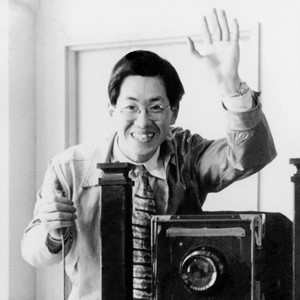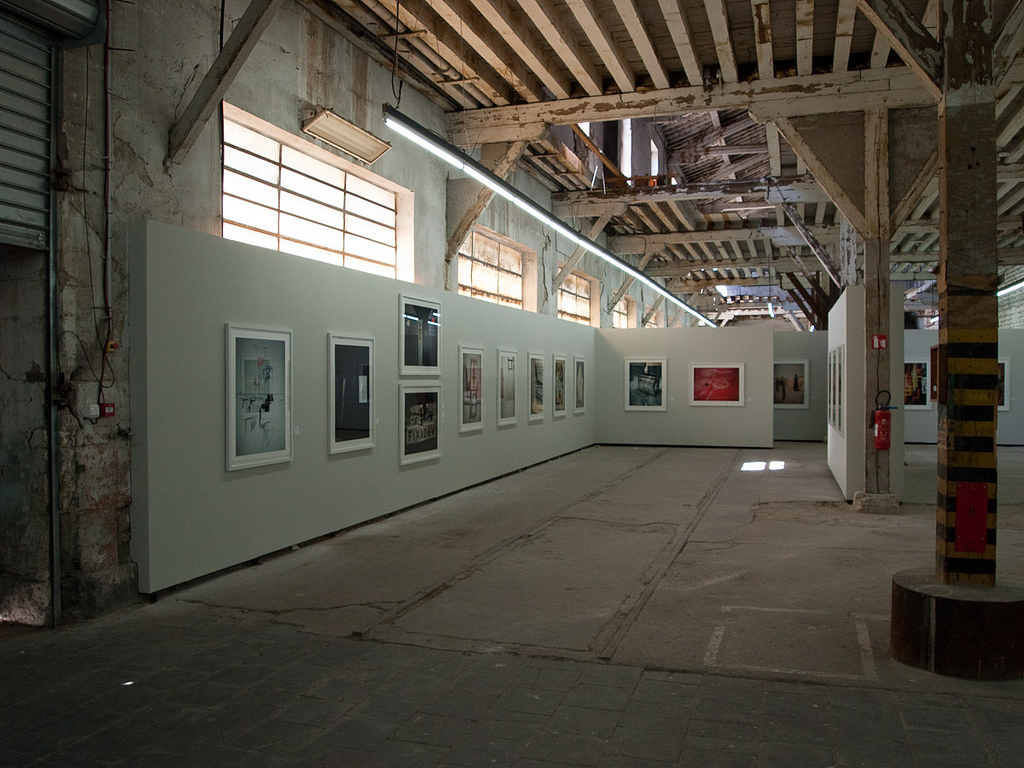|
Ihei Kimura
was a Japanese photographer, known for his portrayal of Tokyo and Akita Prefecture. Life and work Born on 12 December 1901 in Shitaya-ku (now Taitō-ku), Tokyo, Kimura started taking photographs when very young but his interest intensified when he was around 20 and living in Tainan, Taiwan, where he was working for a sugar wholesaler. He opened a photographic studio in Nippori, Tokyo in 1924. In 1930, he joined the advertising section of the soap and cosmetics company Kaō, concentrating on informal photographs made with his Leica camera. In 1933, he joined Yōnosuke Natori and others in forming the group Nippon Kōbō ("Japan workshop"), which emphasized "realism" in photography using 35mm cameras; but this rapidly broke up and Kimura formed an alternative group, Chūō Kōbō ("central workshop") with Nobuo Ina and others. During the war, Kimura worked in Manchuria and for the publisher Tōhō-sha. He edited ''Front'', the propaganda photo journal of the Tōhō-sha compa ... [...More Info...] [...Related Items...] OR: [Wikipedia] [Google] [Baidu] |
Shashin Shūhō
''Shashin Shūhō'' (Japanese: 写真周报; ''Weekly Photographical Journal'') was an illustrated propaganda magazine of the Cabinet Intelligence Department which was published in Japan between 1938 and 1945. It was one of the most successful propaganda publications of Japan. History and profile ''Shashin Shūhō'' was launched by the Cabinet Intelligence Department in 1938, and its first issue appeared on 16 February 1938. It was employed by the Japanese government for propaganda purposes and featured the news about the Japan's war activities in World War II. Its contents were accompanied by photographs which were mostly taken by the Nippon Kōbō collaborators, including Ken Domon and Ihei Kimura. The magazine came out weekly which reached the peak circulation level distributing 500,000 copies in 1943. It folded after the publication of the issue 374–375 on 11 July 1945. The magazine issues have been archived by different institutions, including National Archives of Singapor ... [...More Info...] [...Related Items...] OR: [Wikipedia] [Google] [Baidu] |
Jun Miki
was a Japanese photographer and one of Japan's pioneers in photojournalism. Tokyo Metropolitan Museum of Photography, editor. . Kyoto: Tankōsha, 2000. The Selection Committee of Nikon Salon established the Miki Jun Award in 1999 to remember his legacy. Books showing Miki's works *''Dokyumentarī no jidai: Natori Yōnosuke, Kimura Ihee, Domon Ken, Miki Jun no shashin kara'' () / ''The Documentary Age: Photographs by Natori Younosuke, Kimura Ihee, Domon Ken, and Miki Jun.'' Tokyo: Tokyo Metropolitan Museum of Photography, 2001. An exhibition catalogue. Captions in both Japanese and English, other text in Japanese only. Notes [...More Info...] [...Related Items...] OR: [Wikipedia] [Google] [Baidu] |
Sonorama Shashin Sensho
The Sonorama Festival (since 2008 Sonorama-Ribera) is an annual music festival which takes place in the city of Aranda de Duero, in Castile and León (Spain), since 1998. It is organized by the cultural association, and non-profit, "Art de Troya", in mid-August each year. The line up mainly consists of indie pop, indie rock, and electronic music. With a progressive growth, has become one of the biggest summer festivals in Spain, and it is broadcast live on Spanish National Radio: Radio 3. In 2010, it was awarded as the 3rd best Spanish festival by the readers of the magazine Rockdelux, as 4th best Spanish festival by magazine Mondosonoro. Also, it has been nominated for the Independent Music Awards, organized by the Unión Fonográfica Independiente, in the category of "Best Music Festival in Spain" in 2010 and in 2012. The festival is also composed of other activities: * Sonorama Festival of Short Films, since 2000. *Music demo contest. *Visit and lunch in the old undergro ... [...More Info...] [...Related Items...] OR: [Wikipedia] [Google] [Baidu] |
Kabuki
is a classical form of Japanese dance-drama. Kabuki theatre is known for its heavily-stylised performances, the often-glamorous costumes worn by performers, and for the elaborate make-up worn by some of its performers. Kabuki is thought to have originated in the very early Edo period, when founder Izumo no Okuni formed a female dance troupe who performed dances and light sketches in Kyoto. The art form later developed into its present all-male theatrical form after women were banned from performing in kabuki theatre in 1629. Kabuki developed throughout the late 17th century and reached its zenith in the mid-18th century. In 2005, kabuki theatre was proclaimed by UNESCO as an intangible heritage possessing outstanding universal value. In 2008, it was inscribed in the UNESCO Intangible Cultural Heritage Lists, UNESCO Representative List of the Intangible Cultural Heritage of Humanity. Etymology The individual kanji that make up the word ''kabuki'' can be read as , , and . ... [...More Info...] [...Related Items...] OR: [Wikipedia] [Google] [Baidu] |
Onoe Kikugorō VI
Hamanoshima Keishi (濱ノ嶋 啓志, born 21 March 1970 as Keishi Hamasu) is a former sumo wrestler from Uto, Kumamoto Prefecture, Japan. A former amateur champion, he turned professional in 1992, reaching the top ''makuuchi'' division in 1994. His highest rank was ''komusubi''. After his retirement from active competition in 2004 he became an elder of the Japan Sumo Association and founded Onoe stable in 2006, which has produced a number of top division wrestlers. Career He took part in national sumo competitions at high school and was an amateur champion at Nihon University, where he was a contemporary of the future ''maegashira'' Higonoumi. He made his professional debut in January 1992, joining Mihogaseki stable. He had ''makushita tsukedashi'' status because of his amateur achievements and so began at the bottom of the ''makushita'' division. He won the ''jūryō'' division championship in September 1993 with an 11–4 record. He reached the top ''makuuchi'' division in Jan ... [...More Info...] [...Related Items...] OR: [Wikipedia] [Google] [Baidu] |
Rencontres D'Arles
The Rencontres d’Arles (formerly called ''Rencontres internationales de la photographie d’Arles'') is an annual summer photography festival founded in 1970 by the Arles photographer Lucien Clergue, the writer Michel Tournier and the historian Jean-Maurice Rouquette. The Rencontres d’Arles has an international reputation for showing material that has never been seen by the public before. In 2015, the festival welcomed 93,000 visitors; in 2016, the 100,000 visitor mark was reached. Specially designed exhibitions, often organised in collaboration with French and foreign museums and institutions, take place in various historic sites. Some venues, such as 12th-century chapels or 19th-century industrial buildings, are open to the public throughout the festival. The Rencontres d’Arles has launched the careers of numerous photographers, confirming its significance as a springboard for photography and contemporary creativity. In recent years the Rencontres d’Arles has invited ... [...More Info...] [...Related Items...] OR: [Wikipedia] [Google] [Baidu] |
Asahi Camera
was a Japanese monthly photographic magazine, published from April 1926 until July 2020, when it was discontinued due to declining circulation. History and profile The first issue was that for April 1926.During the twentieth century, Japanese monthly magazines routinely came out in the month before the cover date, or even the month before that. It was from the outset published by Asahi Shinbun-sha, publisher of the newspaper ''Asahi Shinbun.'' The headquarters was in Tokyo. From the January 1941 issue, it merged with the magazines ''Geijutsu Shashin Kenkyū'' (, "Technique Photograph Studies") and ''Shōzō Shashin Kenkyū'' (, "Portrait Photograph Studies"). Publication was suspended with the April 1942 issue. Publication resumed after the Second World War with the October 1949 issue. Its cover employed a monochrome portrait of a girl by Ihei Kimura, who would become a major contributor. ''Asahi Camera'' attempted to satisfy interests in all areas of photography, with short p ... [...More Info...] [...Related Items...] OR: [Wikipedia] [Google] [Baidu] |
Kimura Ihei Award
The is a Japanese photography award. The award has been given every year since 1975 (except 1983) by the Asahi Shimbun Company, publisher of ''Asahi Shimbun'' and the magazine ''Asahi Camera'', in honor of the photographer Ihei Kimura. It is given to one or more new photographers whose work has been exhibited or published during the previous year and is announced in ''Asahi Camera'': its original name, soon shortened, was ''Asahi Kamera Kimura Ihei Shashin-shō'' (). The award is usually given to a single photographer. In 2000, the unprecedented awarding of three prizes, each to a female photographer, caused a stir. Its major rival for attention in the mass media is the Domon Ken Award The Domon Ken Award (土門拳賞, ''Domon-Ken-shō'') is one of Japan's photographic awards. The award was started in 1981 by the Mainichi Newspapers to mark the 110th birthday of the ''Mainichi Shimbun'', its daily newspaper and main publication ..., given annually to a single photographer, us ... [...More Info...] [...Related Items...] OR: [Wikipedia] [Google] [Baidu] |
The Family Of Man
''The Family of Man'' was an ambitious exhibition of 503 photography, photographs from 68 countries curated by Edward Steichen, the director of the New York City Museum of Modern Art's (MoMA) Department of Photography. According to Steichen, the exhibition represented the "culmination of his career." The title was taken from a line in a Carl Sandburg poem. ''The Family of Man'' was exhibited in 1955 from January 24 to May 8 at the New York MoMA, then toured the world for eight years to record-breaking audience numbers. Commenting on its appeal, Steichen said the people "looked at the pictures, and the people in the pictures looked back at them. They recognized each other." The physical collection is archived and displayed at Clervaux Castle in Edward Steichen's home country of Luxembourg, where he was born in 1879 in Bivange. It was first exhibited there in 1994 after restoration of the prints. In 2003 the ''Family of Man'' photographic collection was added to UNESCO's Memo ... [...More Info...] [...Related Items...] OR: [Wikipedia] [Google] [Baidu] |
MoMA
Moma may refer to: People * Moma Clarke (1869–1958), British journalist * Moma Marković (1912–1992), Serbian politician * Momčilo Rajin (born 1954), Serbian art and music critic, theorist and historian, artist and publisher Places ; Angola * Moma, Angola ; Mozambique * Moma District, Nampula ; Russia * Moma District, Russia, Sakha Republic * Moma Natural Park, a protected area in Moma District * Moma (river), a tributary of the Indigirka in Sakha Republic * Moma Range, in Sakha Republic Transport * Moma Airport, in Sakha Republic, Russia * Moma Airport (Democratic Republic of the Congo), in Kasai-Occidental Province Other uses * ''Moma'' (moth), an owlet moth genus * Mars Organic Molecule Analyser, an instrument aboard the ''Rosalind Franklin'' Mars rover * Mixed Groups of Reconstruction Machines, a Greek Army organization * Modern Hungary Movement ( hu, Modern Magyarország Mozgalom, link=no), a political party in Hungary * Moma language, spoken in Indonesia * ... [...More Info...] [...Related Items...] OR: [Wikipedia] [Google] [Baidu] |


